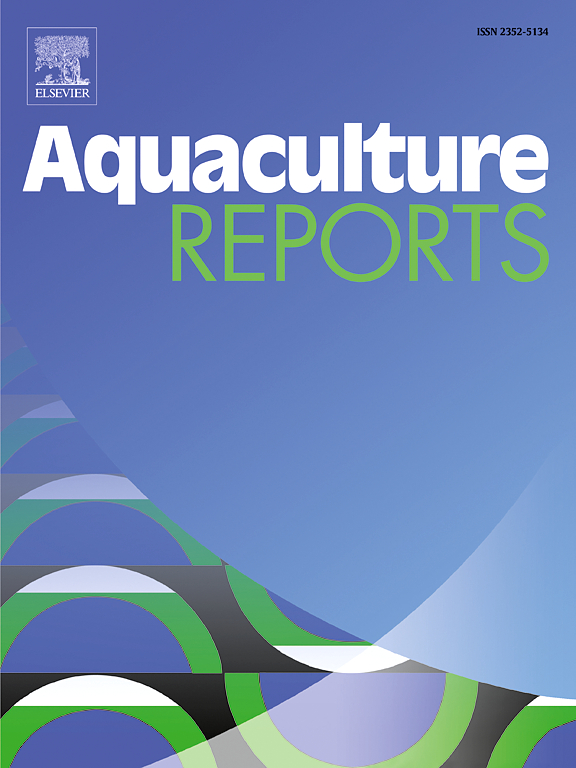The proposed protein and carbohydrate ingredients and the acceptance of moist feed by newly hatched Bigfin reef squid (Sepioteuthis lessoniana)
IF 3.2
2区 农林科学
Q1 FISHERIES
引用次数: 0
Abstract
Bigfin reef squid (Sepioteuthis lessoniana) begin to consume non-living food at least 20 days after hatching while they do not accept artificial diet during early phase of post-hatching. This prevents feasibility from economical aquaculture for this squid. The same situation exists for other squids as well. Here, thirty sources of protein and seven of carbohydrate were tested for in vitro digestibility using digestive enzymes from viscera of Bigfin reef squid. Suitable protein ingredients included the meat of blue swimming crab, catfish, emperor fish, Indian anchovy, Indian mackerel, Nile tilapia, Pacific white shrimp, striped catfish, trash fish and yellow-stripe scad. Suitable carbohydrate sources were corn starch, potato starch and rice flour. These ingredients might be included in an artificial diet for rearing Bigfin reef squid. Based on in vivo preliminary investigation, we first report eight-day-old Bigfin reef squid accepted moist feed produced from red emperor fish (Lutjanus sebae), striped catfish (Pangasianodon hypophthalmus) and Pacific white shrimp (Litopenaeus vannamei) in a 1:1:1 (w/w/w) ratio. The squid accepted the feed on the first day of training. Subsequently, the rate of acceptance increased, and reached 100 % on day 4. Latency-to-seizure of feed decreased on days 3 and 4 relative to the first two days of training. Based on our investigations, feeding Bigfin reef squid by moist feed might be possible. Considering the unique feeding habits compared to other cephalopod species, tailored feeding programs would be required.
求助全文
约1分钟内获得全文
求助全文
来源期刊

Aquaculture Reports
Agricultural and Biological Sciences-Animal Science and Zoology
CiteScore
5.90
自引率
8.10%
发文量
469
审稿时长
77 days
期刊介绍:
Aquaculture Reports will publish original research papers and reviews documenting outstanding science with a regional context and focus, answering the need for high quality information on novel species, systems and regions in emerging areas of aquaculture research and development, such as integrated multi-trophic aquaculture, urban aquaculture, ornamental, unfed aquaculture, offshore aquaculture and others. Papers having industry research as priority and encompassing product development research or current industry practice are encouraged.
 求助内容:
求助内容: 应助结果提醒方式:
应助结果提醒方式:


